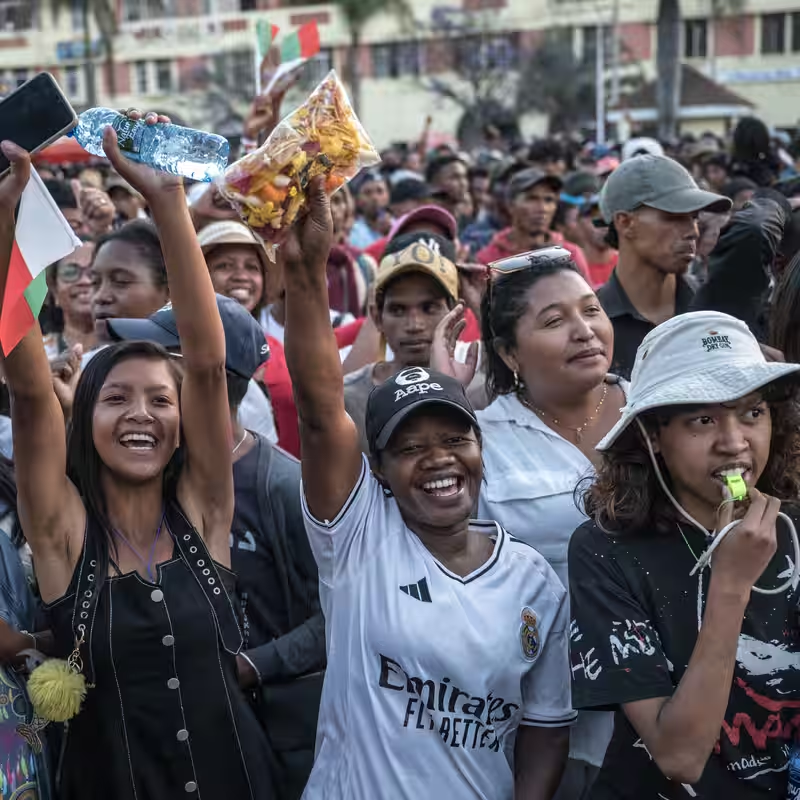Table of Contents
- How the Madagascar Protests Began
- Gen Z Leads Historic Youth Uprising
- President Rajoelina Flees as Military Steps In
- What the Military Takeover Means
- Why Madagascar Matters to Africa and Beyond
- What Happens Next?
- Sources
Madagascar Protests Ignite Over Basic Needs
What started as anger over water and electricity cuts in late September 2025 has exploded into a full-blown political revolution in Madagascar. After weeks of sustained protests led by young citizens, President Andry Rajoelina appears to have fled the country—and the military has seized control of the government.
The Madagascar protests began when two Antananarivo City Council members were arrested ahead of a planned demonstration against utility failures. That move backfired spectacularly, galvanizing civil society and sparking daily rallies across the capital and other major cities.

Gen Z Takes the Helm in Historic Uprising
Unlike past political upheavals in Madagascar, this movement is unmistakably youth-driven. Groups like Gen Z Madagascar have coordinated mass actions using symbols and tactics borrowed from recent uprisings in Nepal, Kenya, and the Philippines—including the now-iconic grinning skull emblem.
“It’s like everything he said was just a drunk man’s promises. And we’re sick of it,” said 21-year-old university student Rovatanjoniaina Valisoa Tsimaniva, echoing a sentiment shared by millions.
With Madagascar’s median age at just 19, this generation isn’t waiting for change—they’re demanding it now.
President Rajoelina Flees Amid Impeachment Efforts
President Rajoelina, who first came to power in a 2009 coup and returned via controversial elections in 2018 and 2023, tried to quell unrest by dissolving his cabinet on September 29. But protesters saw it as empty theater.
On Monday, October 13, Rajoelina claimed he’d gone into hiding due to “threats to his life.” By Tuesday, opposition lawmakers voted to impeach him. He responded by attempting to dissolve the National Assembly—but it was too late.
That same day, parts of the security forces defected to the protesters’ side, and the military announced it was taking charge.
Military Announces Transitional Government
In a televised statement, a military unit declared the suspension of Madagascar’s Constitution and the dissolution of key institutions—including the Supreme Court, Senate, and electoral commission. Only the National Assembly remains intact.
The military pledged to form a civilian-inclusive transitional government within days, with a mandate not to exceed two years. Plans include a national referendum on a new constitution and fresh elections.
At least 22 people have died in protest-related violence, according to the United Nations—a toll the government disputes but cannot ignore.
Why the Madagascar Protests Matter Globally
Madagascar, home to nearly 32 million people and a biodiversity hotspot, has long struggled with political instability since gaining independence from France in 1960. Its economy—reliant on agriculture and vulnerable to climate shocks—has stagnated under Rajoelina’s rule.
But this uprising is part of a broader trend: young Africans are increasingly rejecting leaders who fail to deliver basic services or manipulate elections. From Kenya to Senegal, youth-led movements are reshaping the continent’s political landscape.
What Happens Next?
All eyes are now on the military’s next steps. Will they honor their promise of a short, inclusive transition? Or will Madagascar fall into another cycle of authoritarian rule?
For now, the streets of Antananarivo are jubilant—but cautious. As one protester put it: “We didn’t fight to replace one king with another. We fought for a future.”




